He contracted, moreover, a considerable debt at the postoffice, in consequence of the numerous letter he received from authors and printers soliciting his subscription—and he was applied to by every charitable society for yearly donations, which he gave very cheerfully, considering these applications as so many compliments. He was once invited to a great corporation dinner; and was even twice summoned to attend as a juryman at the court of quarter sessions. Indeed, so renowned did he become, that he could no longer pry about, as formerly, in all holes and corners of the city, according to the bent of his humor, unnoticed and uninterrupted; but several times when he has been sauntering the streets, on his usual rambles of observation, equipped with his cane and cocked hat, the little boys at play have been known to cry, "There goes Diedrich!" at which the old gentleman seemed not a little pleased, looking upon these salutations in the light of the praise of posterity.
In a word, if we take into consideration all these various honors and distinctions, together with an exuberant eulogium, passed on his in the Portfolio (with which, we are told, the old gentleman was so much overpowered, that he was sick for two or three days) it must be confessed that few authors have ever lived to receive such illustrious rewards, or have so completely enjoyed in advance their own immortality.
After his return from Scaghtikoke, Mr. Knickerbocker took up his residence at a little rural retreat, which the Stuyvesants had granted him on the family domain, in gratitude for his honorable mention of their ancestor. It was pleasantly situated on the borders of one of the salt marshes beyond Corlear's Hook; subject, indeed, to be occasionally over–flowed, and much infested, in the summer–time, with mosquitoes; but otherwise very agreeable, producing abundant crops of salt grass and bulrushes.
Here, we are sorry to say, the good old gentleman fell dangerously ill of a fever, occasioned by the neighboring marshes. When he found his end approaching, he disposed of his worldly affairs, leaving the bulk of his fortune to the New York Historical Society; his Heidelberg Catechism and Vander Donck's work to the City Library; and his saddle–bags to Mr. Handaside. He forgave all his enemies—that is to say, all that bore any enmity towards him; for as to himself, he declared he died in good–will to all the world. And, after dictating several kind messages, to his relations at Scaghtikoke, as well as to certain of our most substantial Dutch citizens, he expired in the arms of his friend the librarian.
His remains were interred, according to his own request, in St. Mark's Churchyard, close by the bones of his favorite hero, Peter Stuyvesant; and it is rumored that the Historical Society have it in mind to erect a wooden monument to his memory in the Bowling Green.
Book I
Containing Divers Ingenious Theories and Philosophic Speculations, Concerning the Creation and Population of the World, as Connected With the History of New York
According to the best authorities, the world in which we dwell is a huge, opaque, reflecting, inanimate mass, floating in the vast ethereal ocean of infinite space. It has the form of an orange, being an oblate spheroid, curiously flattened at opposite parts, for the insertion of two imaginary poles, which are supposed to penetrate and unite at the center; thus forming an axis on which the mighty orange turns with a regular diurnal revolution.
The transitions of light and darkness, whence proceed the alternations of day and night, are produced by this diurnal revolution successively presenting the different parts of the earth to the rays of the sun. The latter is, according to the best, that is to say, the latest, accounts a luminous or fiery body, of a prodigious magnitude, from which this world is driven by a centrifugal or repelling power, and to which it is drawn by a centripetal or attractive force; otherwise called the attraction of gravitation; the combination, or rather the counteraction, of these two opposing impulses producing a circular and annual revolution. Hence result the different seasons of the year—viz., spring, summer, autumn, and winter.
This I believe to be the most approved modern theory on the subject; though there be many philosophers who have entertained very different opinions; some, too, of them entitled to much deference from their great antiquity and illustrious characters. Thus it was advanced by some of the ancient sages that the earth was an extended plain, supported by vast pillars; and by others that it rested on the head of a snake, or the back of a huge tortoise; but as they did not provide a resting place for either the pillars or the tortoise, the whole theory fell to the ground for want of proper foundation.
The Brahmins assert, that the heavens rest upon the earth, and the sun and moon swim therein like fishes in the water, moving from east to west by day, and gliding along the edge of the horizon to their original stations during the night; [2] Faria y Souza: Mick. Lus. note b. 7.
while, according to the Pauranicas of India, it is a vast plain, encircled by seven oceans of mild, nectar, and other delicious liquids; that it is studded with seven mountains, and ornamented in the center by a mountainous rock of burnished gold; and that a great dragon occasionally swallows up the moon, which accounts for the phenomena of lunar eclipses. [3] Sir W. Jones, Diss. Antiq. Ind. Zod.
Beside these, and many other equally sage opinions, we have the profound conjectures of Aboul–Hassan–Aly, son of Al Khan, son of Aly, son of Abderrahman, son of Abdallah, son of Masoud el–Hadheli, who is commonly called Masoudi, and surnamed Cothbeddin, but who takes the humble title of Laheb–ar–rasoul, which means the companion of the ambassador of God. He has written a universal history, entitled, "Mouroudge–ed–dharab or the Golden Meadows, and the Mines of Precious Stones." [4] MSS. Bibliot. Roi. Fr.
In this valuable work he has related the history of the world, from the creation down to the moment of writing; which was under the Khaliphat of Mothi Billah, in the month Dgioumadi–el–aoual of the 336th year of the Hegira or flight of the Prophet. He informs us that the earth is a huge bird, Mecca and Medina constitute the head, Persia and India the right wing, the land of Gog the left wing, and Africa the tail. He informs us moreover, that an earth has existed before the present (which he considers as a mere chicken of 7,000 years), that it has undergone divers deluges, and that, according to the opinion of some well–informed Brahmins of his acquaintance; it will be renovated every seventy thousandth hazarouam; each hazarouam consisting of 12,000 years.
These are a few of the many contradictory opinions of philosophers concerning the earth, and we find that the learned have had equal perplexity as to the nature of the sun. Some of the ancient philosophers have affirmed that it is a vast wheel of brilliant fire; [5] Plutarch de Plac. Philos. lib. ii. cap. 20
others that it is merely a mirror or sphere of transparent crystal; [6] Achill. Tat. isag. cap. 19; Ap. Petav. t. iii. p. 81; Stob. Eclog. Phys. lib. i. p. 56; Plut. de Plac. Philos.
and a third class, at the head of whom stands Anaxagoras, maintained that it was nothing but a huge ignited mass of iron or stone—indeed he declared the heavens to be merely a vault of stone—and that the stars were stones whirled upward from the earth, and set on fire by the velocity of its revolutions. [7] Diogenes Laertius in Anaxag. 1. ii. sec. 8; Plat Apol. t. i. p. 26; Plut. de Plac. Philos; Xenoph. Mem. 1. iv. p. 815.
But I give little attention to the doctrines of this philosopher, the people of Athens having fully refuted them by banishing him from their city; a concise mode of answering unwelcome doctrines, much resorted to in former days. Another sect of philosophers do declare, that certain fiery particles exhale constantly from the earth, which, concentrating in a single point of the firmament by day, constitute the sun, but being scattered and rambling about in the dark at night, collect in various points, and form stars. These are regularly burnt out and extinguished, not unlike to the lamps in our streets, and require a fresh supply of exhalations for the next occasion. [8] Aristot. Meteor. 1. ii. c. 2; Idem. Probl. sec. 15; Stob. Ecl. Phys. 1. i. p. 55; Bruck. Hist. Phil, t. i. p. 1154, etc.
Читать дальше











